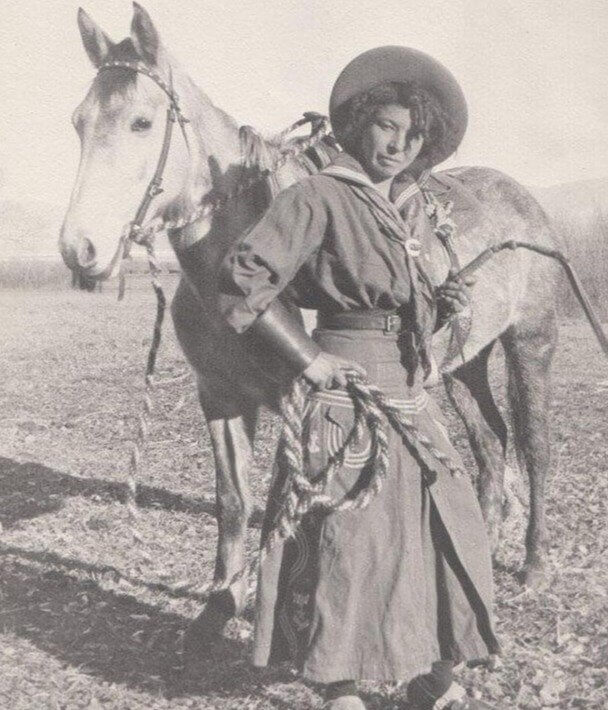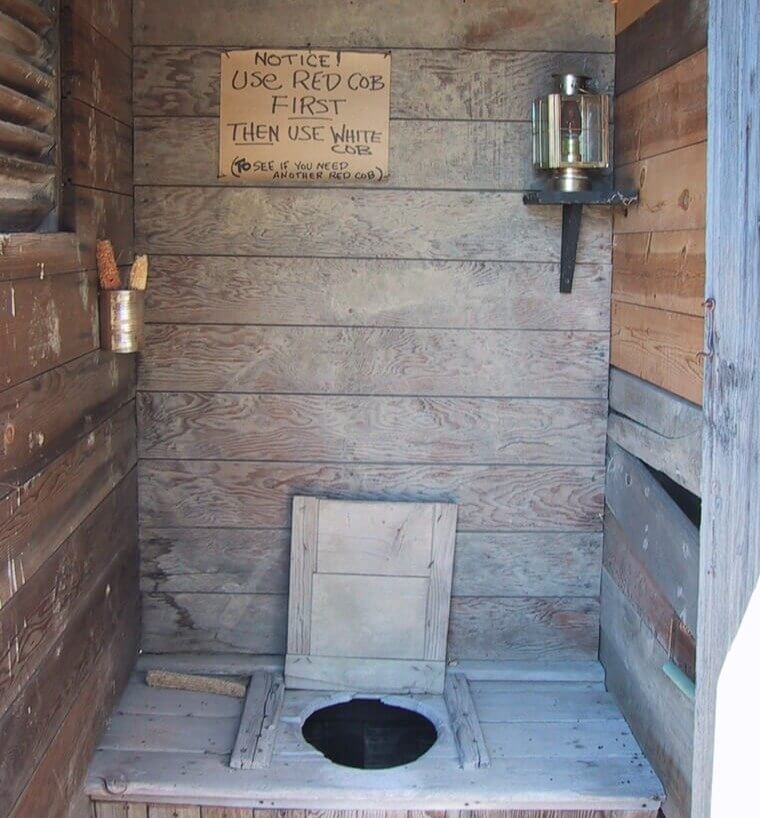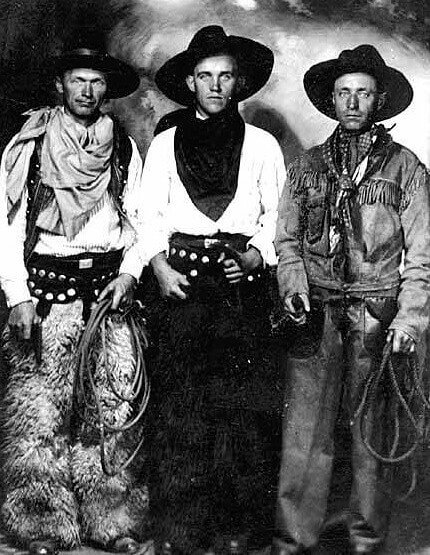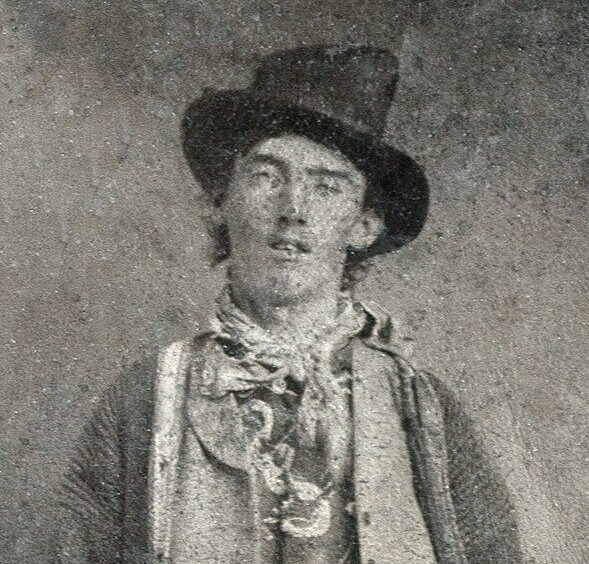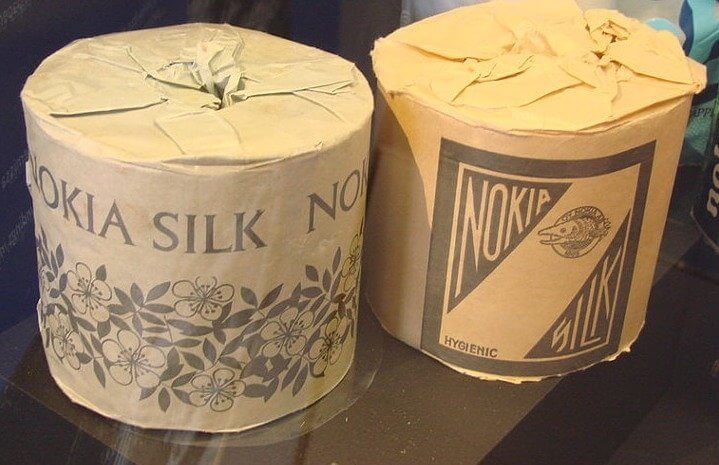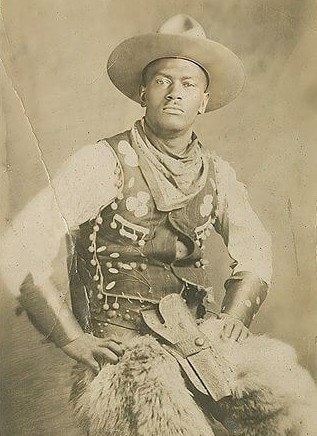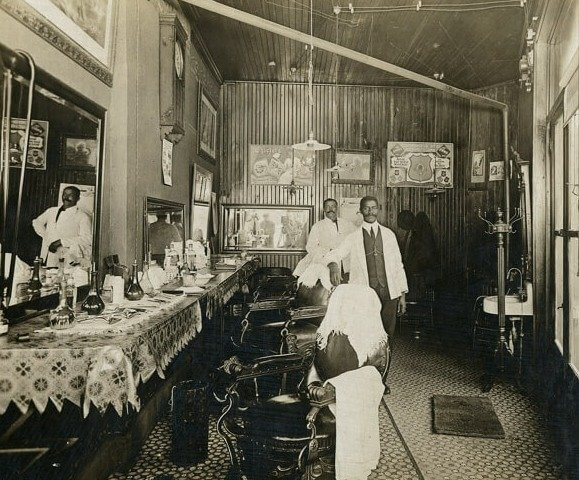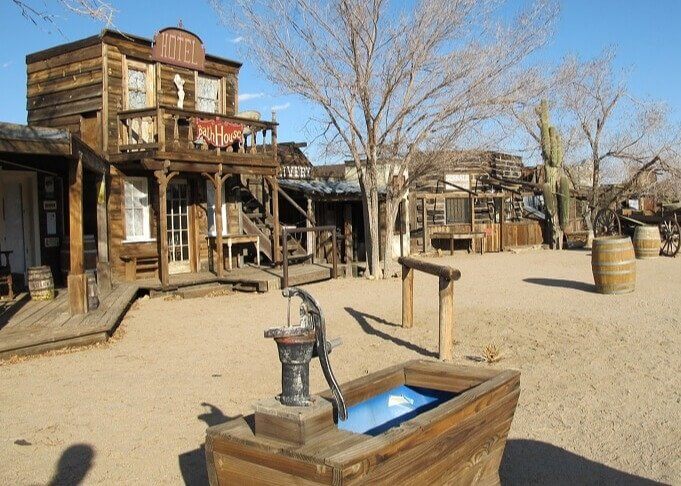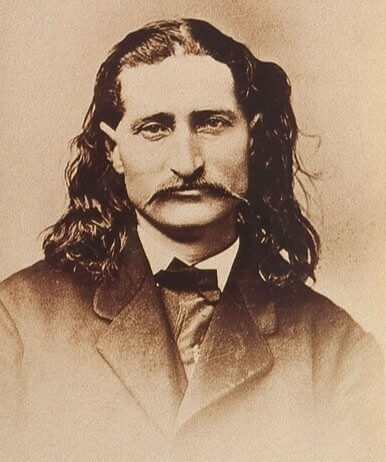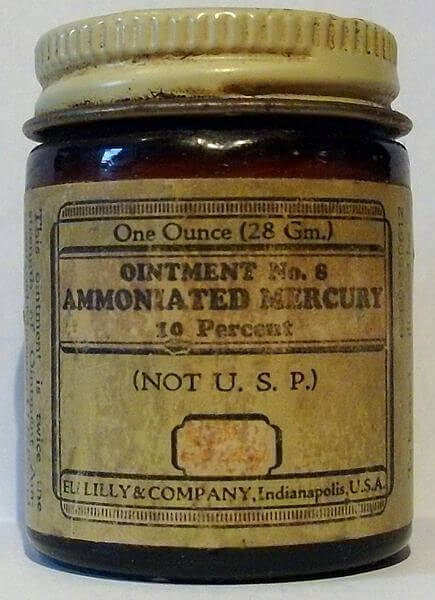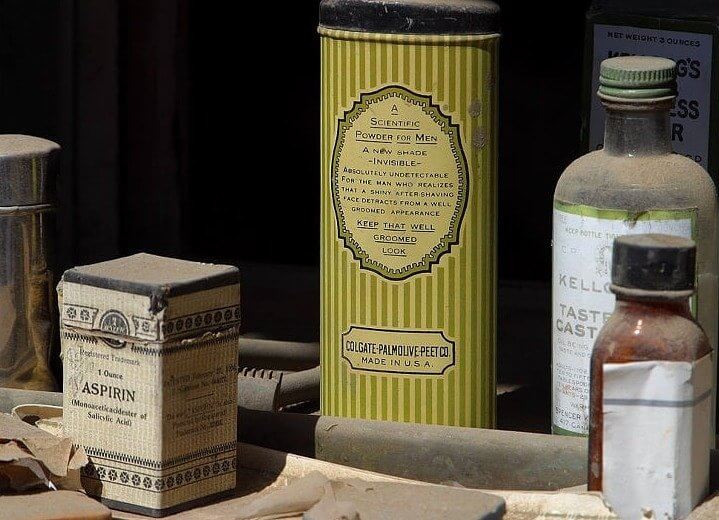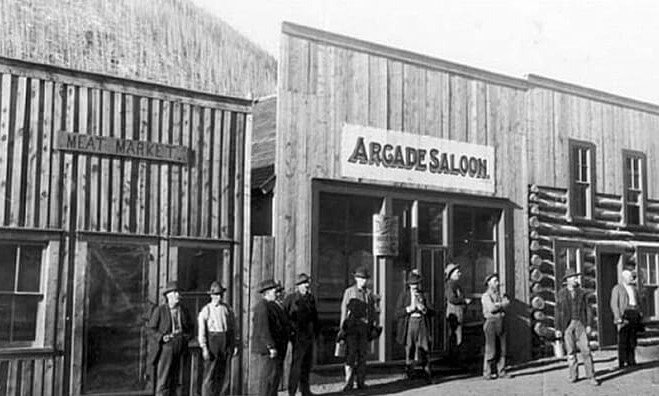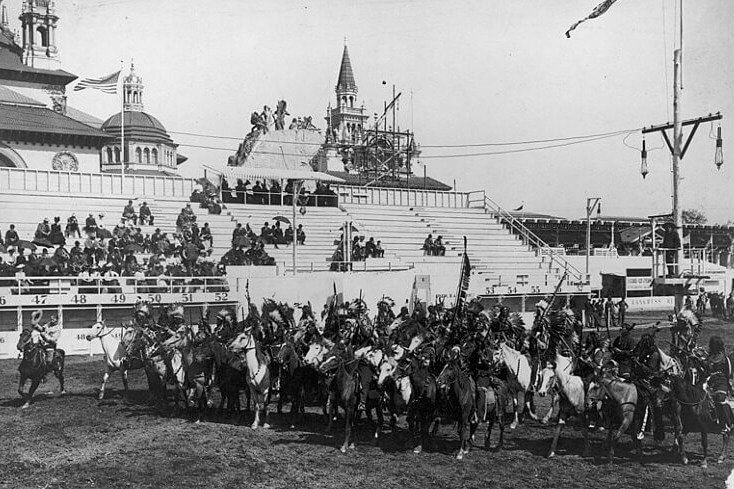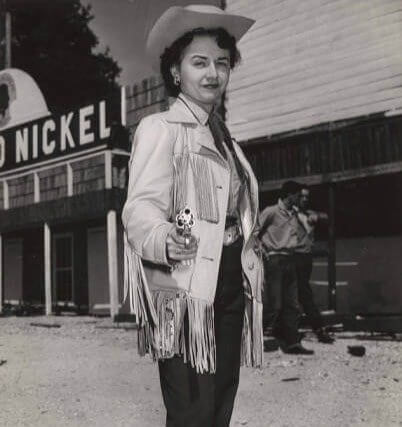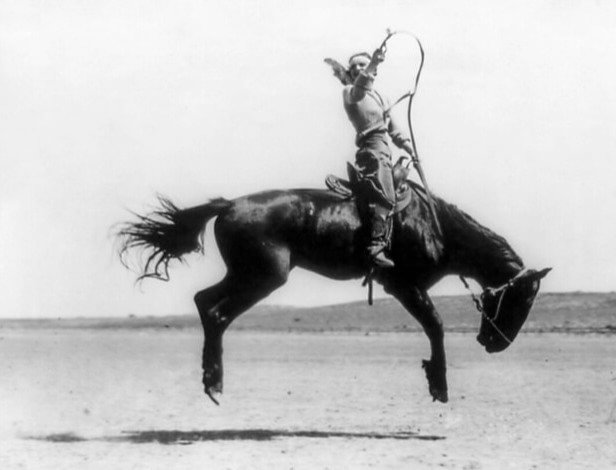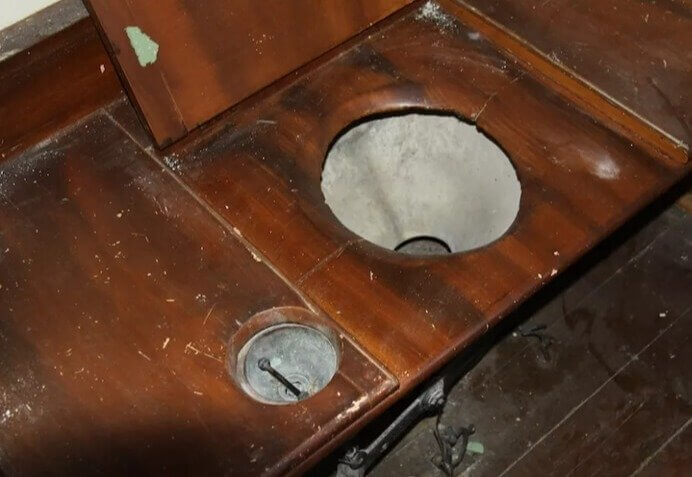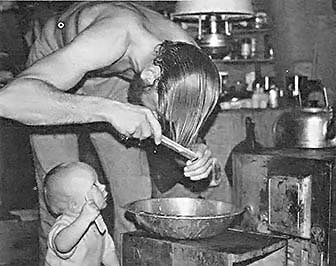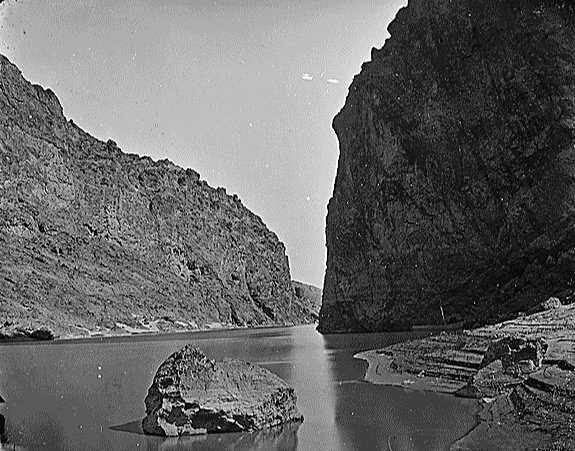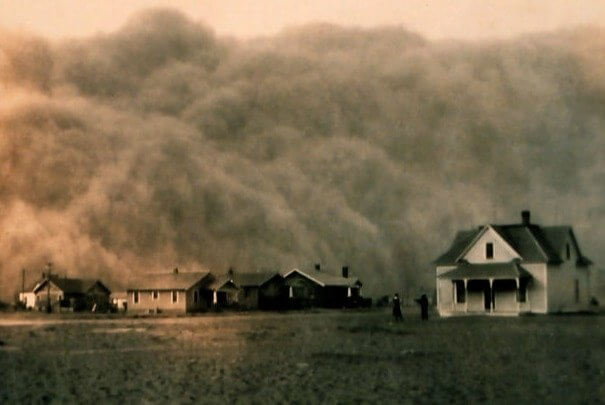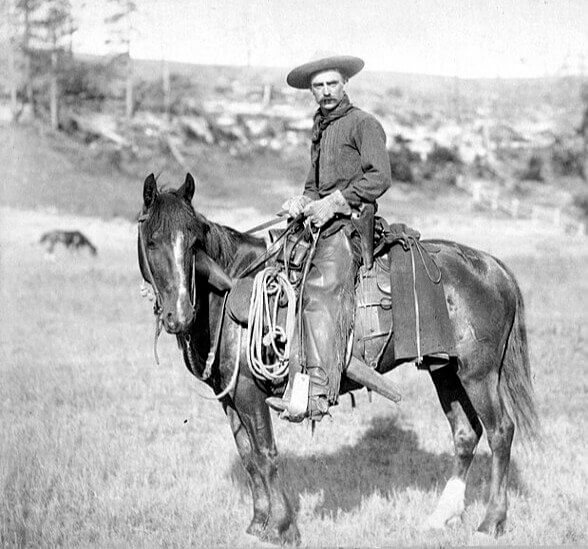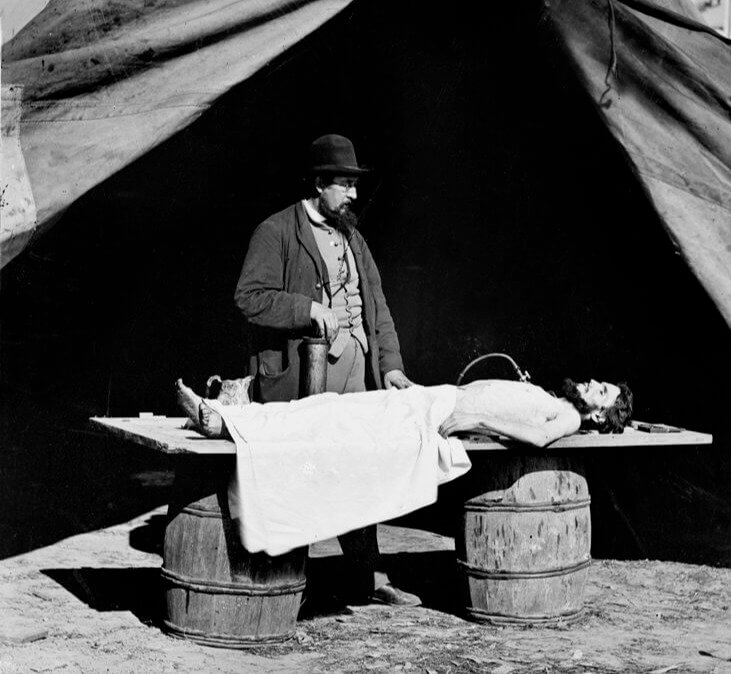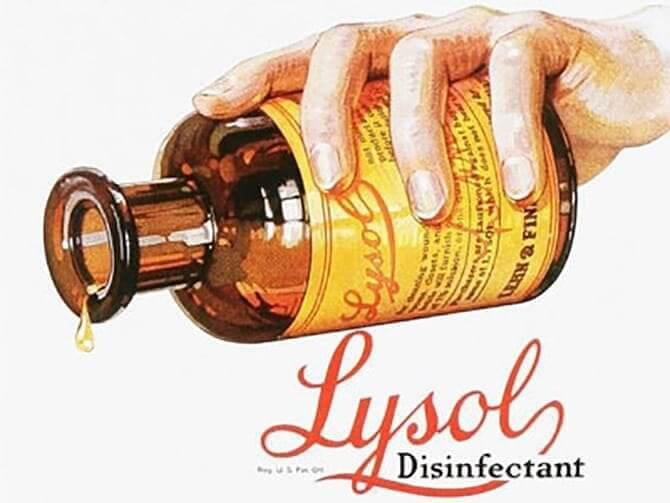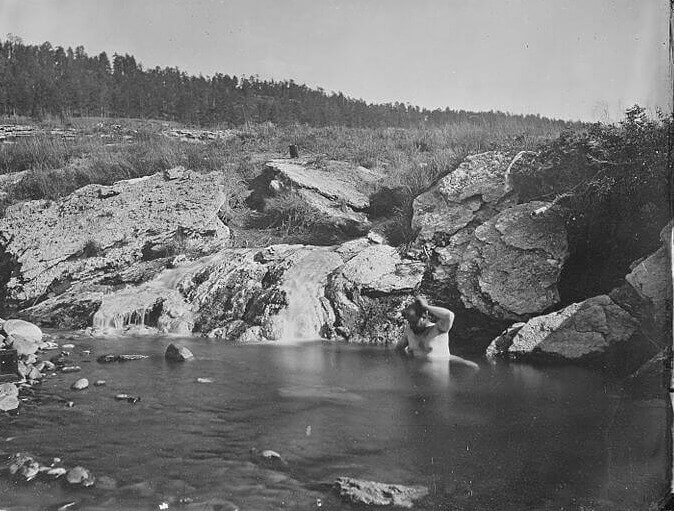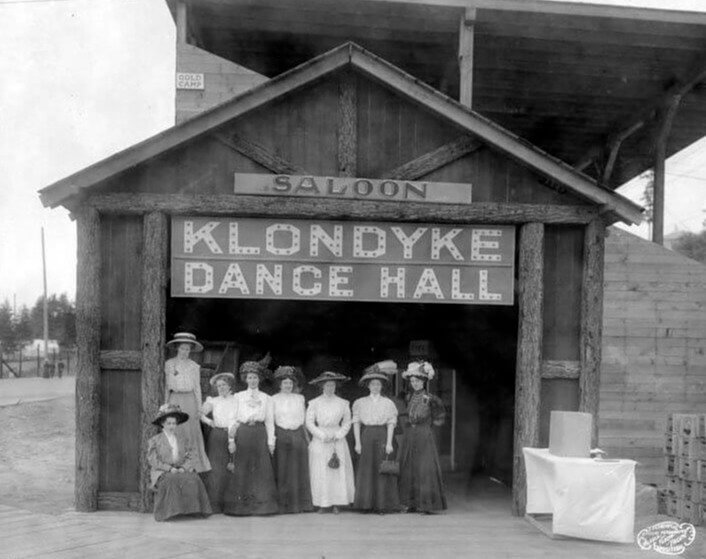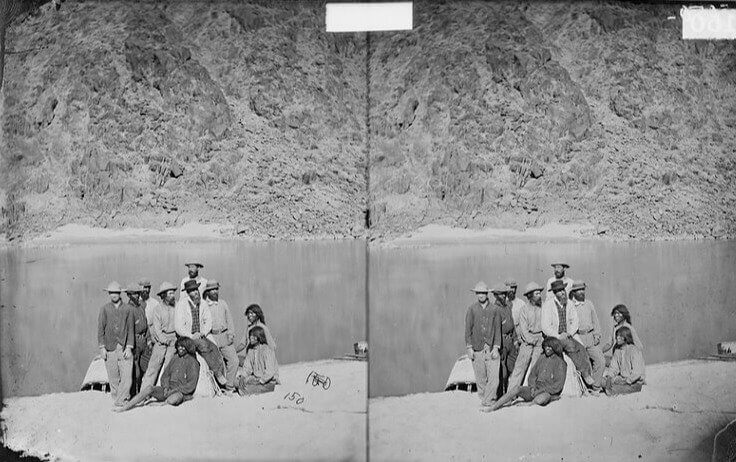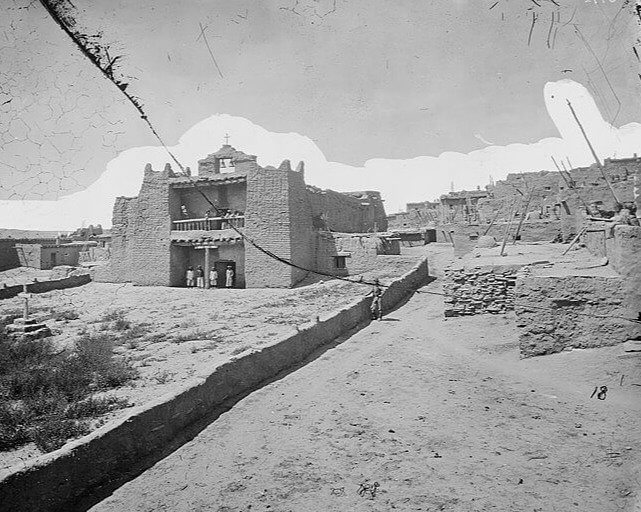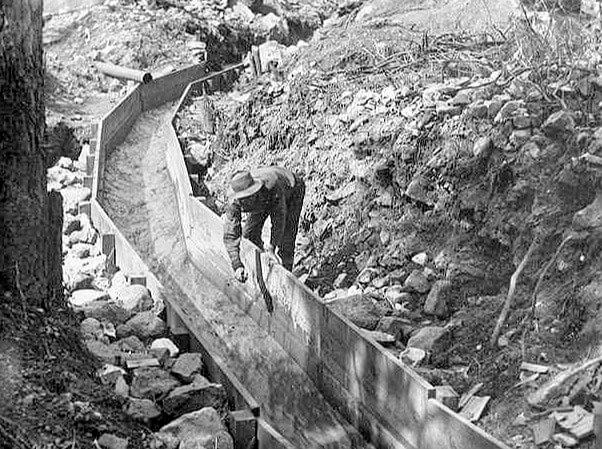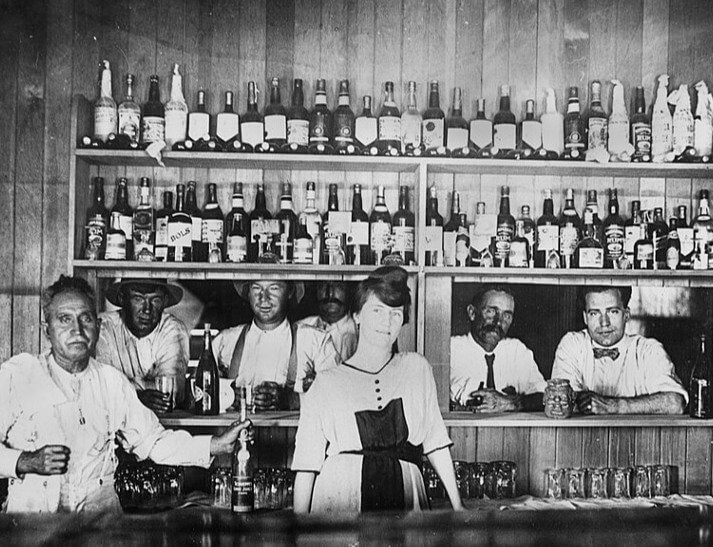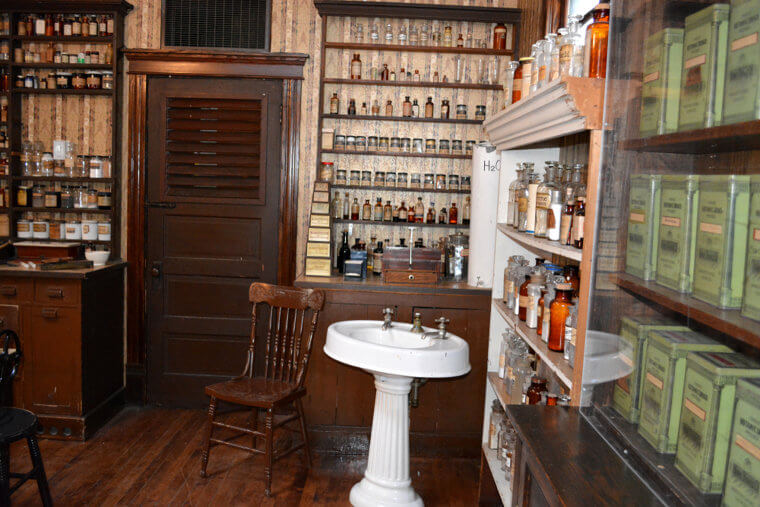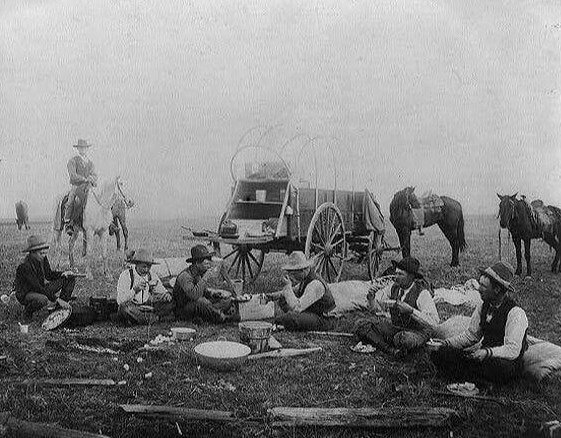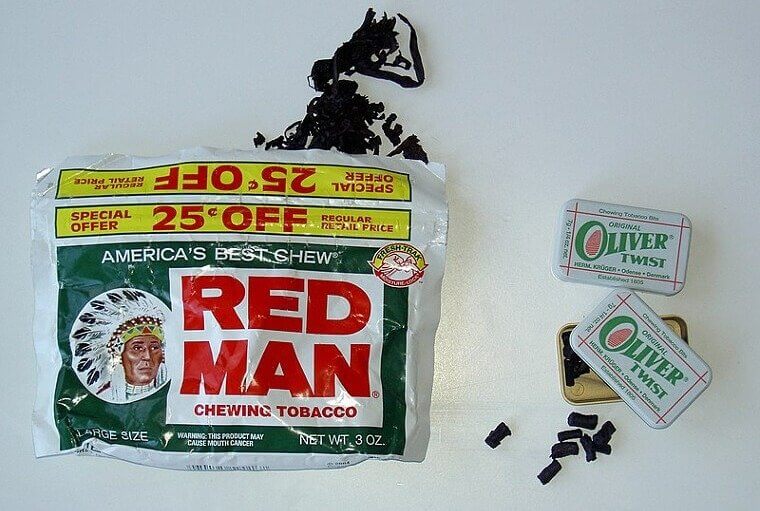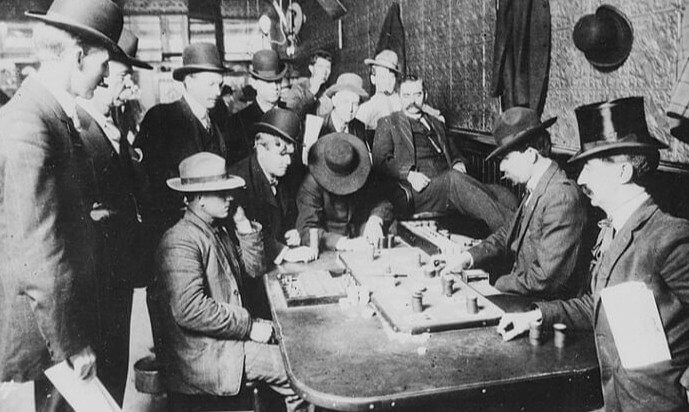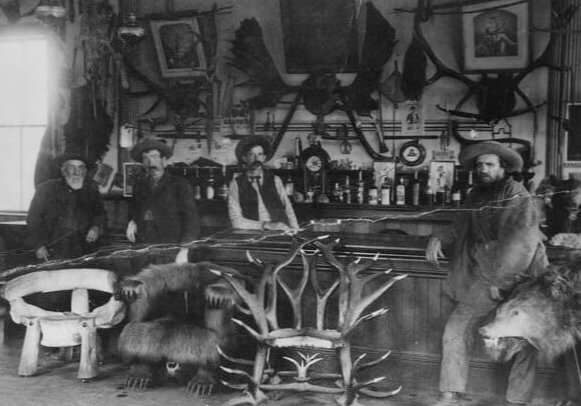Lard Soap, Whiskey and Pencils Were All Used in Women's Hair
Haircare in the wild wild west took an intriguing turn. Forget the fragrant shampoos we know today—back then, it was all about lard and lye soap bars that were scentless and practical. But wait, there's more! Some daring individuals turned to an unconventional blend of whiskey and castor oil to cleanse and condition their tresses. Talk about a wild haircare cocktail! Can you imagine putting all of these random products in your hair?
And how did women style their hair during that time? With pencils, of course! They'd wrap their locks around a pencil and hope it looked curly and cute after.
People Went to the Bathroom in Outhouses That Smelled Horrid
Most people think of cowboys and Western films when they think of the wild west, but it was a time full of dirty practices. Specifically, a time when modern toilets were mere figments of the future. Outhouses, those outdoor sheds covering holes in the ground, were the norm. Imagine the unsanitary conditions: pungent odors, bugs galore, and no toilet paper. That's right—this essential didn't grace the Western world until the mid-1800s.
Leaves, corn cobs, or grass served as less-than-ideal substitutes for toilet paper, and the smell was so over-powering that standing near one would instantly make your stomach churn.
Bars Were Filled With Bad Quality Liquor and Towels Full of Bacteria
The world of old western saloons was a time when booze flowed freely, and adventures unfolded. But beneath the lively facade lay a hidden truth that will make your skin crawl. People would venture into uncharted territories full of makeshift saloons known for serving a notorious brew known as "rotgut" liquor. This was usually poor-quality random liquors combined, and it wouldn't be surprising to learn that it could make people sick after drinking it.
As if that wasn't enough, the bar rails were adorned with towels, supposedly used to mop up beer-soaked beards. Little did patrons know, these seemingly harmless towels harbored a breeding ground of germs and filth.
It Was Common to Sleep in Bug-Infested Beds Made of Straw
Imagine a world where beds consisted of straw and hay, without any bed frames to elevate them. It may seem unthinkable today, but that was the reality of the past. Comfort was a secondary concern, as sleeping on straw was still preferable to the bare floor. However, it was extremely difficult to have proper sanitation, and regular replacement of the straw was often impractical. This led to some less-than-ideal sleeping arrangements.
Often the hay beds were riddled with bugs and lice and any other creepy crawler that nestled its way into the hay stacks!
Cowboy Bandanas Could Protect Against Overwhelming Smells
Cowboys and cowgirls of the Wild West era weren't just fashion trendsetters; their choice of accessories served a dual purpose – practicality and hygiene. Bandanas provided protection against the gritty winds and scorching sun; there's another hidden benefit. In a time when access to clean water and regular bathing was limited, personal hygiene practices weren't always up to par. The bandanas, often worn around the neck or face, acted as a makeshift shield.
Not only did they safeguard against dust, but they also aided in reducing the spread of germs and unpleasant odors that people so commonly came across during the rugged days of the Wild West.
Oral Hygiene Consisted of Plyers and Whiskey
The lack of essential dental care resources meant oral hygiene took a backseat to survival, and a pristine smile was a rare gem. Toothbrushes were a luxury, and brushing was an afterthought for many. But it gets worse. When faced with dental issues like cavities or root canals, the remedies were far from sophisticated. Brace yourself, as the favored method was simply barbers or even blacksmiths acting as makeshift dentists and extracting the offending tooth with players!
And while numbing the pain was a priority, the only solace came in the form of a stiff gulp of whiskey.
Most People Didn't Have Toilet Paper
Back in the Wild West, people had to get creative when it came to bathroom business. Toilet paper wasn't a thing for a long time, so they resorted to using corn cobs, torn pages from magazines, and catalogs. It wasn't until 1857 that Joseph Gayetty introduced "medicated paper," but it was sold individually, not on rolls. Roll-style toilet paper didn't arrive until 1890, along with the invention of the toilet paper holder.
It wasn't until the 1920s that proper toilet paper became widely available. The Wild West truly had its share of unhygienic bathroom practices.
The Surprising Truth Behind Infrequent Showers in the Wild West
In the rugged and dusty terrain of the American West, cleanliness took on a whole new meaning. The pioneers and cowboys held a peculiar notion that bathing too often could actually harm their health. They feared that frequent washing would leave their pores vulnerable, becoming breeding grounds for bacteria and diseases. However, the reality was far from ideal. With limited access to clean and uncontaminated water, many settlers had no choice but to forgo regular showers and baths.
Little did they know their reluctance to wash would result in unsanitary consequences. Cowboys, clad in the same clothes day after day, fell victim to stubborn fungal infections that flourished amidst the grime.
Barbers Were Often Sought Out for Advice on Grooming Habits
Step back in time to the Old West, where barbers held a special place in society. They were seen as knowledgeable figures, providing not just haircuts but also advice on hygiene. However, their recommendations weren't always the best. People praised them for promoting personal cleanliness as a key to comfort and health. But little did they know that some of the practices and products suggested by barbers, like using questionable lotions and powders, weren't truly effective.
Nonetheless, their status in the community remained high, and even women sought their guidance on beauty routines.
Clean Water for Drinking and Showering Was Hard to Come by
The wild west was a time when the luxury of running water was but a distant dream. As the United States expanded westward in the 19th century, most regions lacked adequate water infrastructure. While established areas enjoyed the convenience of irrigation and filtering systems, venturing into uncharted territories meant leaving behind these modern amenities. This also meant that showering, brushing your teeth, and even drinking fresh water were all challenging.
Therefore their best bet was to collect any rainfall; otherwise, drinking water and cleaning yourself was a bleak task that was hard to accomplish every day.
Most Men in the Wild West Had Long and Dirty Hair
In the Wild West, men's hairstyles became more than just a fashion statement - they revealed a traveler's tales. Most men avoided getting a haircut because they were traveling around on the run. Therefore, they weren't cleaning and grooming themselves. So their long hair was representative of how long they were on the road. And most likely, how long they've gone without a good shower. You can imagine how smelly their hair would get!
But that's just the beginning; stay tuned as we expose the gross details of the wild west's unclean secrets.
Mercury Was Used to Combat Syphilis
There was a time when a terrifying epidemic known as syphilis swept through the population like wildfire. In the quest for a remedy, medical professionals turned to a substance that seemed to hold the key: mercury. Despite the severe side effects, patients endured a grueling routine of daily applications of mercury ointment. This reckless treatment could last for years while unleashing many horrors upon the afflicted. However, people were convinced the treatment was worth it.
Ulcers, teeth loss, and even kidney failure were just a few of the devastating consequences. It was indeed a scary time for dealing with any health issues.
Soaps Were Made With Animal Fat
In the modern era, we're spoiled for choice, with many soap brands for every preference; the options seem endless. However, in the days of the wild west, the soap selection was far more limited. Yet, that didn't mean they went without. Their soaps boasted a straightforward recipe. Typically composed of animal fat, lye, and water and infused with herbs for scent and added effects, these cleansers got the job done.
Although it sounds gross to think that people actually washed their bodies with soaps consisting of animal fat, it was just the way of life.
People Spit so Much It Had to Be Outlawed
In the saloons of the Western frontier, it was a common sight to see men spitting tobacco on the floor. Spittoons and cuspidors were placed along the bar to collect the spit, but it didn't solve the problem. The floors were covered with sawdust to soak up the spit, creating a breeding ground for germs. It became a hotbed for respiratory diseases like pneumonia and tuberculosis. To make matters worse, travelers who rented rooms in these saloons slept amidst this unhygienic mess.
Some places even passed laws banning spitting, especially in train stations, with hefty fines and imprisonment as punishments to combat this unsanitary practice.
Live Shows Were Breeding Grounds for Germs
In the 1800s, amid the grandeur and excitement of Buffalo Bill's Wild West Show, there were behind-the-scenes realities that highlighted the unsanitary conditions of the time. Behind the dazzling performances and thrilling reenactments, the show faced challenges in maintaining proper hygiene. With limited access to sanitation facilities, performers and staff struggled to maintain cleanliness amidst their rigorous schedules. The dusty arenas and crowded encampments provided the perfect breeding grounds for germs and diseases, posing health risks to both performers and audience members.
While the Wild West Show captured the imaginations of many, it also serves as a reminder of the unsanitary practices prevalent in that era. Keep reading to find out even more hygienic practices we're glad are left in the past.
Women Would Clean Their Faces With River Water
Picture yourself in the wild west, where dirt was an unwelcome companion clinging to every nook and cranny. But how did people cope with this constant filth? Well, the resourceful women of the era had their own tricks up their sleeves. Every morning, they embarked on a quest for cleanliness, venturing to springs or streams to wash their faces and quench their thirst. But there was one catch that really prohibited things from getting fully clean.
There was hardly any privacy at these bodies of water, and complete baths were a luxury reserved for rare occasions, so splashing their faces with water was as clean as they got.
The Not-So-Fresh Reality of Cowboys and Their Horses
When we imagine cowboys, we envision tough and rugged individuals with a deep bond to their loyal steeds. Riding across vast landscapes and embarking on daring escapades, their partnership is the stuff of legends. But behind the romanticized façade of the Wild West lies a less glamorous truth. Cowboys, known for their infrequent bathing, unintentionally subjected their beloved horses to the same fate. As these traveled great distances, proper hygiene took a backseat for both rider and horse.
Apparently, the cowboys were known for entering the town after a long journey with a potent and distinctive scent following them and wafting through the air.
The Struggle for Sanitation and Proper Bathrooms
While indoor plumbing arrived in big cities like New York as early as 1842, it took several more years for the West to catch up. By 1920, a mere 1% of homes in the entire United States could afford any form of indoor plumbing. However, for the majority of rural homes in the Wild West, hand-pumped water was the best they could hope for. Most bathrooms then resembled porta potties today.
The lack of proper sanitation in many homes throughout the Wild West meant that basic hygiene practices suffered, contributing to unsanitary living conditions and potential health risks for its residents.
Families Bathed in the Same Bath Water
In the early days of the Wild West, having a bathtub in your home was a luxury that most households couldn't afford. The lack of proper bathtubs was mainly due to the inconvenience of carrying water, heating it, and filling a tub. It wasn't until Sears, Roebuck & Co. began publishing mail-order catalogs in 1894 that people had access to affordable tubs. However, even then, a Sears catalog tub would cost nearly $800 in today's money.
As more households acquired bathtubs, the family would share the same bathwater, one person at a time, to save on effort. The "Saturday night bath" tradition emerged as everyone wanted to be clean for church on Sunday.
The Filthy Truth Behind Hoover Dam's Transformation
In this stunning historical photograph, we catch a glimpse of the untamed Colorado River as it once flowed near the Hoover Dam site. But what lies beneath the surface is a tale of unsanitary conditions that plagued the river and its surroundings. In the wild days of the past, the Colorado River was subject to pollution and contamination from various sources, including mining activities, industrial waste, and inadequate waste disposal practices.
The once pristine waters became a breeding ground for diseases and posed serious health risks to those who relied on it for drinking, bathing, and irrigation.
Sand Storms Led to Respiratory Diseases
Hold on to your cowboy hats, folks, because we're about to reveal a dirty little secret from the wild west! Picture this: frontiersmen, rugged and determined, battling not only the elements but also an unhygienic nightmare. We're talking about dust storms that would make your jaw drop and sand that seemed to infiltrate every nook and cranny. These brave souls had to get creative to stay clean amidst the chaos.
From covering their faces to dodging sand in their eyes, they faced severe health risks. Inhaling sand and having excessive dust in their eyes posed health hazards, including respiratory diseases.
Men Were Way Dirtier Than Women
In the wild west, cleanliness was a battle against the elements. With water scarcity plaguing the era, bathing became a luxury, and some folks were lucky to wash once a week! But here's the twist: women emerged as the hygiene heroes of the frontier. Tasked with indoor chores, they had better access to precious water and maintained a higher level of cleanliness. Meanwhile, men toiled outdoors, battling dusty winds and grime without frequent bathing.
Basically, you didn't want to be a man, especially during this era, because chances were you were outside and grimy and smelly all the time.
Germs and Health Risks Were Everywhere
Picture this: courageous frontiersmen and daring pioneers setting out on an epic quest to conquer the untamed territories of the Wild West. But little did they know that with every step they took, they were unwittingly becoming carriers of unseen enemies—germs! As they traversed vast landscapes and encountered new communities, these explorers unknowingly spread bacteria and viruses from one corner of the frontier to another. With limited medical knowledge and resources, diseases ran rampant.
Influenza, measles, and tuberculosis, to name a few, wreaked havoc on the population. The lack of proper sanitation and hygiene practices only fueled the transmission of these illnesses.
Lysol Was Used as a Cure for Many Infections
In an era where intimate issues were hushed, one peculiar product took center stage: Lysol. Yes, you read that right. Originally marketed as a household disinfectant, Lysol found an unexpected role in personal hygiene. Women seeking relief from uncomfortable conditions turned to this potent concoction to address feminine concerns. Astonishingly, Lysol was marketed as a cure-all for everything from yeast infections to contraception. Little did they know the harsh chemicals and toxins lurking within Lysol could do more harm than good.
It wasn't until later that society realized the dangerous implications of such practices. The Wild West may have been a frontier of adventure, but it wasn't a very pleasant time for those dealing with health issues.
The Therapeutic Power of Colorado’s Thermal Springs
While daily showers may not have been the norm, the pioneers found solace in the rejuvenating waters of Colorado's thermal springs. Pagosa Springs stood out as a haven for relaxation and cleanliness among these natural wonders. The pioneers would immerse themselves in the mineral-rich waters, believing in their healing properties. These hot springs became revered not just for their therapeutic benefits but also as a way to escape the challenges of frontier life.
Today, these historic hot springs had transformed into luxurious spas, preserving the legacy of the pioneers' quest for cleanliness and well-being during a time when cleanliness was hard to come by.
Transmitted Infections Were Rampant
Desire and danger were intertwined in saloons and brothels. Behind the allure of the painted ladies, a hidden menace lurked—the risk of venereal disease. Shockingly, it's estimated that half of the region's adult entertainers were afflicted with these contagious infections, and the use of hazardous remedies like mercury and boric acid only exacerbated the danger. This meant that transmitted infections among adult entertainers and their customers spread like wildfire. The true extent of the havoc wreaked by venereal diseases remains unclear, as death certificates often concealed the cause of death.
The grim reality of the Old West took a toll on the lives of sex workers and their clients and the harsh realities faced in a society where clean living was a luxury few could afford.
The Healing Waters of Arkansas Were Used as a Remedy for Pioneer's Unsanitary Practices
In an era where illnesses and unhygienic environments were rampant, and medical treatments were scarce, these thermal waters held a mystical power for healing. Picture a time when back pains and inflammations were common ailments. Instead of modern creams and treatments, American and European medical professionals recommended a journey to the hot springs. Pioneers would embark on arduous journeys, traversing thousands of miles to immerse themselves in the therapeutic waters.
These natural wonders provided a much-needed break from the hardships of frontier life while also shedding light on the unsanitary hygiene practices of the time and the strong belief in the healing abilities of these extraordinary springs.
How the Wild West Embraced Hygienic Haircare
Personal hygiene practices often took a back seat during this time. Long, unkempt hair became a common sight among pioneers and cowboys, serving as a testament to their journeys. However, as time progressed and awareness grew, a shift occurred. Men began to recognize the importance of proper hair hygiene and the potential risks of neglecting cleanliness. With improved technology and grooming tools, a new trend emerged – the clean-cut look.
Men eagerly wielded the shears and razors, bidding farewell to their wild, tangled manes and embracing a more clean and polished appearance for the first time.
The Deadly Toll of Disease in the Wild West
In the Wild West, disease was the leading cause of death among pioneers. Around nine out of ten pioneers succumbed to illnesses like dysentery, smallpox, measles, mumps, influenza, cholera, mountain fever, and scurvy. Cholera, in particular, was the most common and deadly disease. It spread through contaminated water, which was abundant in the unsanitary conditions of the time. Pioneers faced the constant risk of infection and death due to poor hygiene practices and the lack of clean water sources.
Staying healthy and avoiding disease was a constant challenge in the unforgiving wilderness of the Wild West.
Taking Care of Emotional Health With Superstitions and Mystical Practices
In the unpredictable world of the Wild West, people found solace and comfort through various means, including superstitions and mystical practices. However, these practices existed alongside the harsh realities of limited access to clean water and proper hygiene. With water scarcity and challenging living conditions, unhygienic practices could make people very sick. So how would they deal with it? They would turn to fortune tellers to get a glimpse into their fate and futures.
They embraced practices like crystal ball gazing and tarot card readings brought by Romani people from Europe. These traditions offered them a sense of solace and connection amidst the challenges of frontier life.
Even Churches of This Time Were Crawling With Germs
While the Old Mission Church in New Mexico stands as a symbol of rich history and cultural heritage, it holds secrets of unsanitary practices from the past. Back in the days of the Wild West, hygiene was often neglected, and the church was no exception. With transitions in ownership and occupations by various groups, the church lacked proper maintenance and sanitation. Dust and dirt settled on its ancient walls, making it a breeding ground for bacteria and allergens.
The lack of hygiene standards in those times contributed to the spread of diseases and discomfort for the worshipers. Today, we admire the Old Mission Church as a testament to our history, but let's not forget the unhygienic realities of the past.
Miners Faced Lung Disease From Working in Dusty Mines
In the pursuit of wealth and prosperity during the wild west era, miners faced perilous conditions that extended beyond treacherous tunnels and backbreaking labor. One of the most significant threats to their health was the constant exposure to airborne respirable dust, a hazard that lurked within the mining environment. The inhalation of these extra fine particles posed a grave danger, leading to the development of a debilitating lung disease known as pneumoconiosis.
Tragically, the risks did not end there. Miners also faced an elevated likelihood of succumbing to lung cancer, further highlighting the dire consequences of their unsanitary working conditions.
Alcohol Was Used as a Cure for Illnesses
With limited access to proper medical care, the pioneers and doctors were few and far between, so pioneers had to get creative when it came to treating their ailments. They turned to unconventional remedies and elixirs in their quest for health and wellness. The lack of sanitation and hygienic standards meant that cleanliness was often neglected. Dust-covered clothes, infrequent bathing, and unkempt appearances were the norm. Alcohol drinks were used as a sedative.
It was a time when the pursuit of health clashed with the realities of an unsanitary existence, so drinking various cocktails was considered dealing with an illness.
Unbelievable Medicines of the Wild West From Cocaine to Aspirin
Hygiene was a luxury, and sickness lurked around every corner during this time. But amidst the filth, pioneers had some surprising remedies up their sleeves. If a cowboy had a toothache and was desperate for relief, there was one solution. Enter cocaine, yes, you read that right! In the 1880s, toothache drops containing cocaine were all the rage. This powerful substance acted as a local anesthetic, numbing the pain and giving cowboys a temporary respite from dental agony.
Without clean water for bathing and proper waste disposal, diseases thrived, and people fell ill. These medicines became a lifeline in an unclean world.
Whiskey Was Often Drank in Place of a Meal
When we conjure up images of the Wild West, we often envision cowboys feasting on hearty meals around campfires. But the reality of pioneer diets in those rugged times was far from extravagant. In fact, they often ate beans as an entire meal. Another surprising staple found its way onto the menu, and that is whiskey. Sometimes they would drink whiskey as an entire meal. Clearly, taking care of themselves was the least of their worries.
Even when they had proper food, the lack of cleaning water and unsanitary conditions in which these meals were prepared made the food susceptible to germs.
The Wild West's Obsession With Chewing Tobacco and Spitting
In the untamed era of the wild west, chewing tobacco was more than just a gross habit—it served a purpose. Beyond its addictive nature, many individuals turned to chewing tobacco as a means to combat dryness while outside in dusty fields all day. The moisture from the chew provided comfort, keeping their mouths salivated during long hours outdoors. However, this practice came with a pretty disgusting side effect: copious spitting.
Spitoons were placed everywhere in banks, stores, pubs, and more to accommodate all the spitting people were doing. So chewing tobacco might've been a favorite pastime, but the excessive spitting was truly hard to witness.
Whiskey, Gambling, and Brothels Were Common Pastimes
In the untamed frontier of the Wild West, there existed a world of vice and temptation. Cowboys and settlers sought solace from their harsh lives through three main outlets: whiskey, gambling, and brothels. Whiskey flowed freely, providing a temporary escape from the challenges they faced. Gambling dens and saloons became hubs of excitement and risk, where fortunes were made and lost in the blink of an eye. And then there were the brothels, catering to the desires of those seeking companionship and pleasure.
These indulgences, while offering a momentary respite, reflected the unsanitary and morally questionable practices prevalent during that era.
Liquor Fueled Bar Fights Happened Every Day
In the realm of Wild West entertainment, the saloon reigned supreme as a haven for cowboys seeking a reprieve from the dusty trails. But the drinks offered within these harsh establishments were far from refined. Whiskey, the drink of choice, had a recipe consisting of scorched sugar, potent alcohol, and even bits of chewing tobacco. This concoction packed a punch like no other, rendering many cowboys rowdy and prone to violence.
NCactus wine emerged as a popular alternative, blending tequila with peyote tea; these potent elixirs constantly fueled bar fights.
